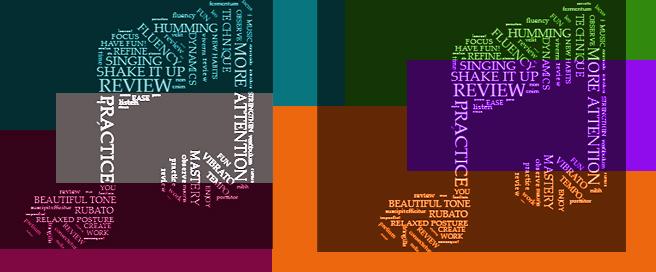How to Review Your Pieces

February 2nd, 2020
What is the importance of review in practice sessions?
Editor: Erin Cano, violin & viola
Maria Schwartz, Suzuki Flute Teacher:
When practicing a review piece, it is important to think about what part of your playing would benefit from more attention. A thought like "oh yeah, I already know this," could lead to a habit of playing through a piece without listening or observing. Instead of relying on just finger memory, there's an opportunity to consider new habits or reminders you want to include. It is useful to bring in focus points from your most recent lessons and to make a plan for a higher level of listening. When you decide what you want to concentrate on, find a way to shake it up and experiment! This could be singing the entire piece with note names or playing the loud parts but humming the soft ones. See what you can dream up for an innovative way to practice a well-known piece.
For review pieces, I think about what I want to improve upon, what I'm listening for, and HOW I'm practicing to get there. Did I just work toward that goal? How can I tell? This helps me gain a better understanding of when I may be playing from beginning to end vs. when I am listening for things to practice. I recommend bringing in new ways to actively practice review pieces which can help you observe your practice habits. So tomorrow when you bring out a review piece, ask yourself somewhere along the process, "did I play through it or did I practice it?"
Joe Spoelstra, Suzuki Guitar Teacher:
Review is the essence of mastery in music making. It is the demonstration of fluency, expressiveness, and the foundation from which more advanced concepts are learned.
Review is our time to play with fluency. When the notes and rhythms come with ease, we can focus on ease of technique and the production of beautiful tone. Review also allows us to experiment and refine our expressive devices: dynamics, rubato, vibrato, articulation, tempo, etc. And review prepares us for upcoming pieces and techniques. The beauty of the Suzuki repertoire progression is that it is sequenced so that pieces that you continuously review are strengthening a foundation that will prepare you to play at the highest level.
I start every lesson with tonalizations and review. Rather than thinking of review as going through a checklist of old repertoire, we use it as a time to grow our abilities. Can you focus on a relaxed posture the whole way through your review? Can you play your review at a slower or faster tempo? Can you exaggerate your dynamics or articulation? Can you focus on your fullest, most beautiful tone? Review offers us a chance to grow our abilities, deepen our connection with our instrument, and have fun with our repertoire!
